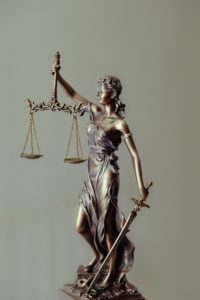The Supreme Court v. Press Freedom? Why a landmark ruling is in the crosshairs of two justices
It’s hard for me to place much faith in the Supreme Court when it comes to doing the right thing when it really counts. After all, the court has ruled that corporations are people, too (Citizens United). It also contains one justice, Clarence Thomas, who would vote conservative even if the case involved making dictatorship legal. We have another justice whose sexual assault accuser passed a lie detector test, and another whose confirmation hearing you could time with a stopwatch.
And so, this is the batch of people with whom we will trust one of the most crucial issues worthy of writing about—but that has also escaped the media, what with Afghanistan and the Delta variant. Big stories indeed. Yet you’d think with this Supreme Court matter, the media would pay more attention. Or closer attention.
Because this is about us.
Two justices on the court have called for revisiting Times v. Sullivan, a landmark case involving press freedom and the right to criticize government officials. On July 2, Thomas and Neil M. Gorsuch made their views known in dissents from the court’s decision to dismiss a libel case brought by the son of a former prime minister of Albania. Bad news for the scion of Albania. Worse news for the First Amendment? Read on.
Briefly: In 1964, the court ruled 9-0 in favor of The New York Times in its case against Montgomery police commissioner L. B. Sullivan. The commissioner had sued in local court following the publication of a full-page ad by supporters of Martin Luther King Jr. The ad, which criticized Montgomery police for mistreating civil rights protesters, contained some factual inaccuracies. One of those, laughably, was a quibble over which song the protestors had sung, which in part led to the court’s decision to adopt an “actual malice standard.”
More relevant: Southern states and the lawmakers who had vigorously pursued the press had roughly $300 million in libel cases at the time—equivalent to more than $2.64 billion today.
Over the years, Times v. Sullivan has stood as a legal beacon that defends freedom of the press and the First Amendment. Remarking on a 1967 case that applied the ruling as precedent, Justice William Brennan Jr. championed “the indispensable service of a free press in a free society.”
The Supreme Court’s press pressure
Which brings us to 2021 and the danger that Times v. Sullivan faces. As two of the court’s most conservative justices, Thomas and Gorsuch are taking aim at the ruling and in effect stripping it of its media protections.
At issue is whether the explosion of internet outlets has led to the mass publication of lies that public figures can’t address legally because Times v. Sullivan ties their hands. On the surface, it’s an interesting argument. We’re entering an age of deep fakes, alternative facts, and “news” outlets that couldn’t give a damn or three about what’s true. Gorsuch wrote in his July dissent:
“What started in 1964 with a decision to tolerate the occasional falsehood to ensure robust reporting by a comparative handful of print and broadcast outlets, has evolved into an ironclad subsidy for the publication of falsehoods by means and on a scale previously unimaginable.”
Yet does this amount to reason for gutting or overturning the ruling? That to me smacks of “all or nothing” thinking.
I find one of Thomas’ comments particularly troubling. In a 2019 dissent on Flowers v. Mississippi—a case involving a black plaintiff who was tried for the same murders six times, but found to be a victim of prosecutorial misconduct—Thomas said, “The media often seeks ‘to titillate rather than to educate and inform.’”
I should say. Isn’t Thomas the man who, according to Anita Hill’s 1991 testimony in his confirmation hearing, asked her, “Who has pubic hair on my Coke?” I guess when the media covered that remark, it was titillation, too. (Note: Thomas’ confirmation was one of the narrowest in Supreme Court history.)
Then we have this statement, as recounted by the Freedom Forum, from Justice Elena Kagan, writing before she joined the court. Libel suits akin to Sullivan:
“…[were] not attempts by individuals to redress damage to personal reputation, but rather were attempts by government to shut down criticism of official policy.”
From undercover to under fire
“Shut down criticism of official policy.” Ay, there’s the rub. The Trump. (See: “The press is the enemy of the people.”) The whatever. The press coverage of squelched voting rights in Texas, Georgia, and other red states. Those policies, as well documented, put people of color at a disadvantage. Interesting to note here that Times v. Sullivan was in large part a reaction to the actions of southern states to keep the media squelched as officials did whatever the hell they wanted to civil rights protesters and people with the “wrong” skin color. (What Thomas is thinking here as an African-American man, I have no idea; you’d have to ask him.)
Granted, I think Gorsuch and Thomas are talking about how chasing down media lies is akin to a Whac-A-Mole game for a digital age. But as is often the case with such things, we must consider whether undoing Times v. Sullivan would represent a major breach in the wall that, once penetrated, keeps the mainstream press and the “liberal media,” as some would dub it, from doing its job out of fear. After all, the great majority of the lying these days is done by Facebook trolls and small, conspiracy-minded shops–not The New York Times or Wall Street Journal.
Here I think of undercover journalism. The Food Lion v. ABC case in 1999 involved two reporters for Primetime, who applied for jobs as supermarket employees. They then secretly videotaped unwholesome food handling practices at a Food Lion store. Food Lion sued for fraud and lost on that account–but did win a largely symbolic victory on trespassing charges.
The cash reward from the U.S. appeals court was a measly $2. But in terms of the chilling effect it had on ferreting out crime, lawbreaking, and reprehensible behavior, the reward might as well have amounted to $2 trillion. I recall the 1970s nursing home exposes by the Chicago Tribune. Undercover reporting revealed shocking abuse and neglect against residents. Not that it would today. That kind of journalism is virtually impossible thanks to the mighty fine lawyers for Food Lion and the appeals court judges who threw them a crumb, since exploded into a mountain.
What next for Times v. Sullivan?
It seems to me that if given their way, Thomas and Gorsuch would paint with a broad brush that, while it might hold tiny, irresponsible media outlets in check, would also do great damage to those news operations and reporters who strive to do their very best every day in the name of truth. Libel cases against the press by public officials should be hard to pursue, and in policing the lies others tell, there may be no greater watchdog than the media itself.
After all, if this is about lies, public officials in the age of Trump have learned to lie every single goddamn day with impunity, and to double down on those lies. These are intentional, cynical lies and liars–and yet who’s suing them? No one.
Meanwhile, they now have two powerful allies on their side clad in dark robes and darker ideology.
Lou Carlozo is Qwoted’s Editor In Chief. All opinions expressed have been held up by unanimous decision in the Kangaroo Court of Appeals. Email lou@qwoted.com or connect on LinkedIn.
POPULAR POSTS
LATEST ARTICLES
CATEGORIES

